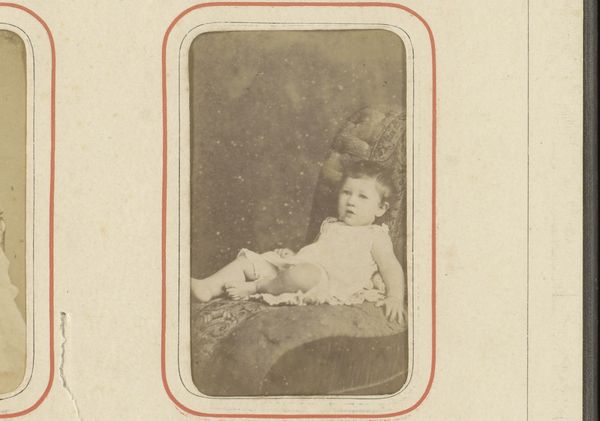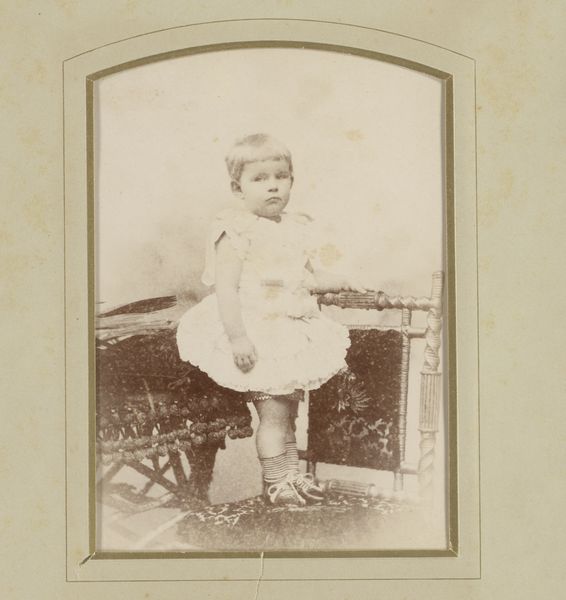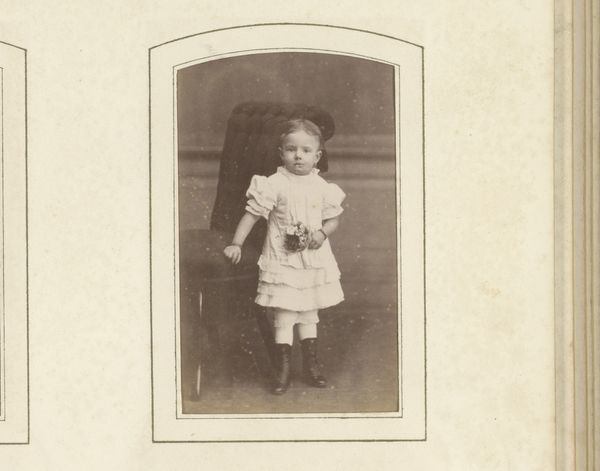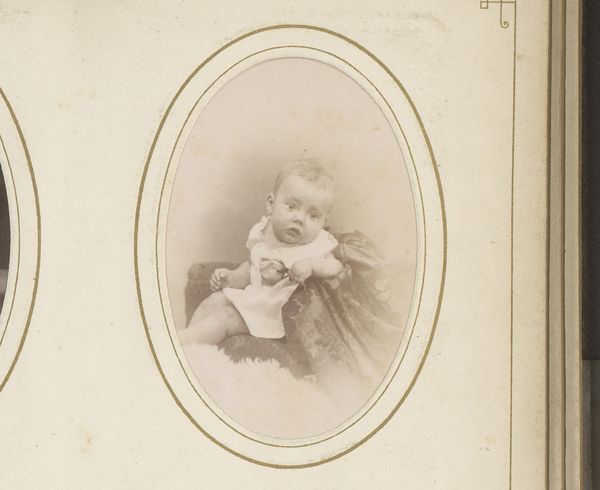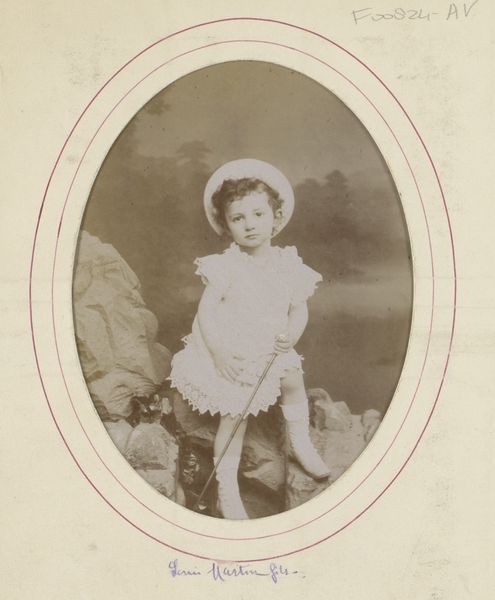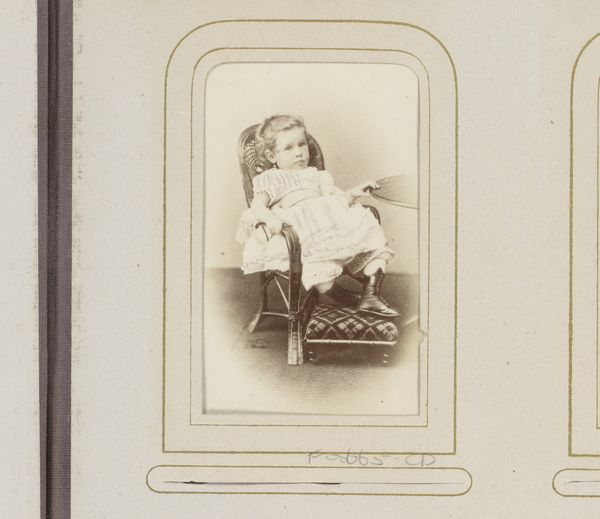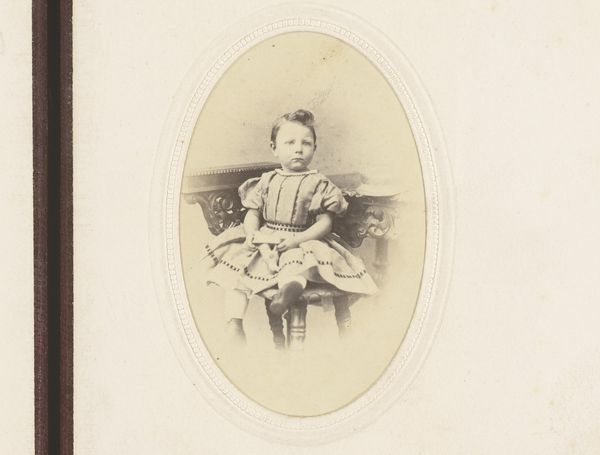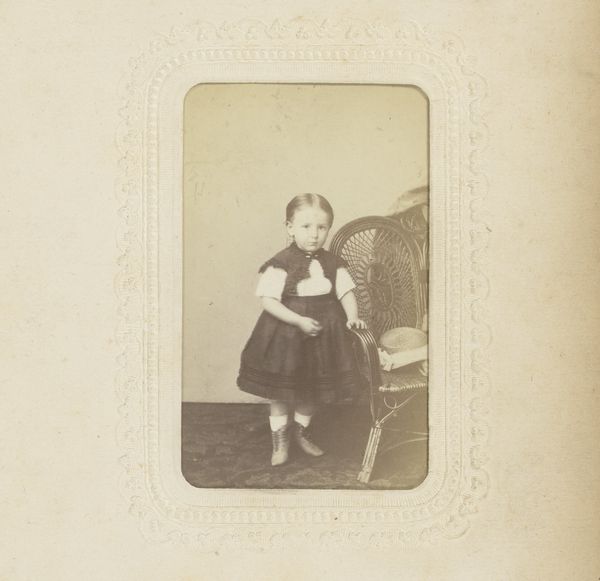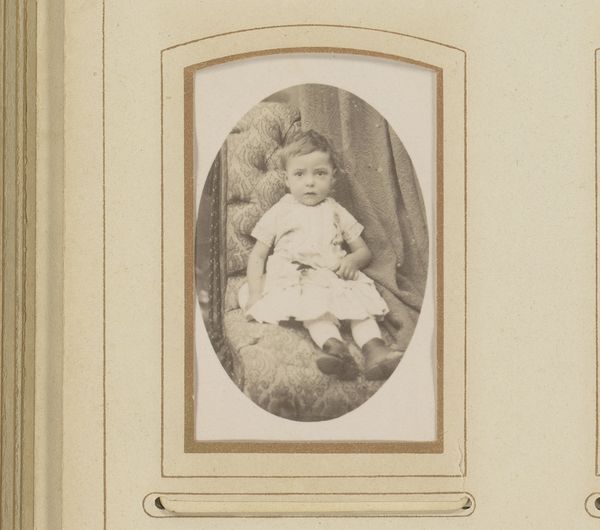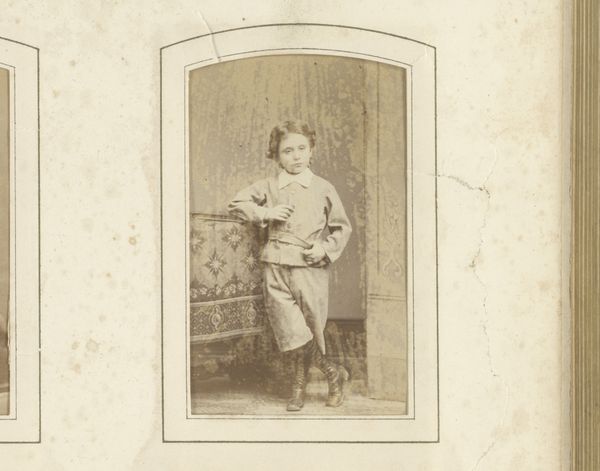
Portret van een meisje met pop in de hand, op knieën zittend op een stoel 1861 - 1887
0:00
0:00
albertgreiner
Rijksmuseum
#
aged paper
#
toned paper
#
yellowing background
#
parchment
#
tea stained
#
old-timey
#
yellow element
#
19th century
#
warm-toned
#
golden font
Dimensions: height 85 mm, width 52 mm
Copyright: Rijks Museum: Open Domain
Editor: This is a portrait, likely a photograph, by Albert Greiner. The title translates to "Portrait of a girl with doll, kneeling on a chair" and dates to sometime between 1861 and 1887. The photograph has an old-fashioned warmth to it. What's your perspective on this work? Curator: Thanks for setting the scene! For me, this image evokes a whole complex web of ideas about childhood, class, and representation. This photograph raises so many questions about how we understand girlhood in the 19th century, right? Think about the doll – is it a simple toy, or a symbol of the girl’s future role as a mother? Editor: That's interesting; I hadn’t considered that the doll might be symbolic beyond just being a toy. Curator: And consider her posture; she isn’t playing freely, but is posed. How does this staged formality reflect the social expectations placed on young girls? Perhaps even the power dynamics inherent in portraiture itself – who is controlling the gaze, and whose story is being told? The family's economic standing is also highlighted by the elaborate chair. How complicit is the artist in upholding a certain ideology of gender or class? Editor: I see what you mean about power dynamics. So, are you saying this photograph, while seemingly innocent, can actually reveal a lot about social structures back then? Curator: Exactly! This seemingly simple photograph offers a window into the complex social fabric of its time, reflecting and reinforcing the roles assigned to women and girls. What does it mean to *see* someone – really see them – within their historical context? Editor: Wow, I will never look at old portraits the same way. It really does make you think about who has the power to represent whom, and what stories are being told… or left out.
Comments
No comments
Be the first to comment and join the conversation on the ultimate creative platform.
